Another collective noun – today, a Nide of Pheasants. Technically a group of pheasants is only called a “nide” when they are on the ground; a group of pheasants in flight is called a “bouquet”.
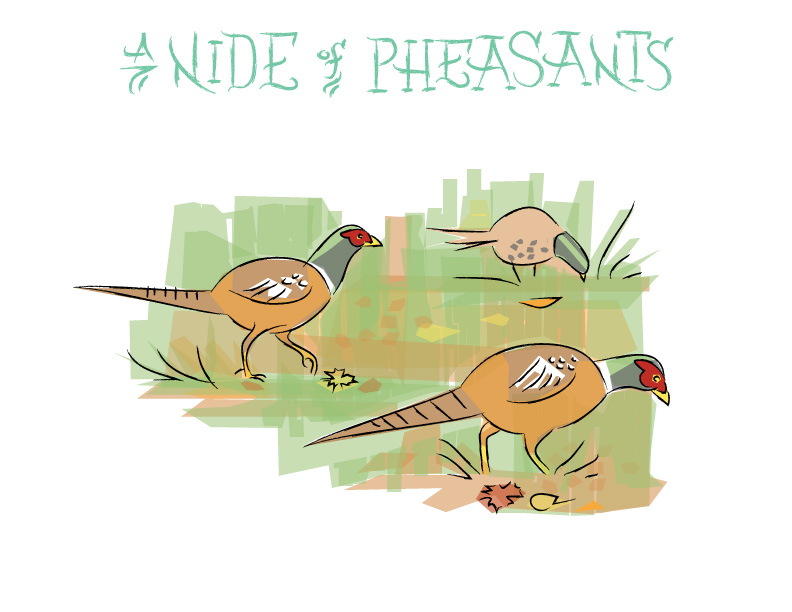
Another collective noun – today, a murder of crows. This marks the halfway point in this abecediary of collective nouns…

Wandering through the interwebs today, I found a blog that consists entirely of artists’ sketchbooks, Sketches and Jottings. It’s a great site worth checking out on its own, but the real find for today was a link to Shari Blaukopf’s site, The Sketchbook. Blaukopf is a Montreal artist (Beaconsfield, to be precise) who posts a sketch a day. Mostly watercolours, these exquisite little gems are a delight to behold that capture Montreal & environs with deftness and charm.
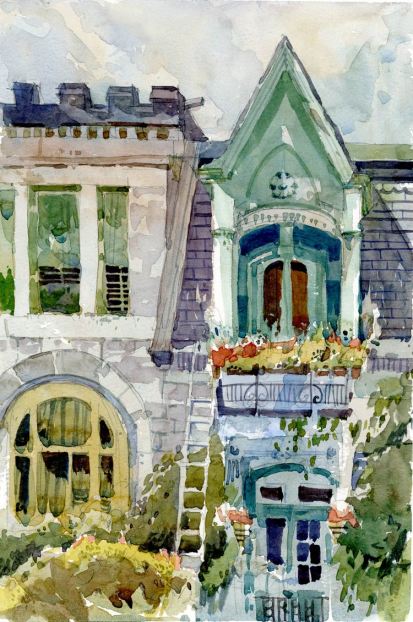
Carré St-Louis
I am a graphic designer and teacher who spends too much time working on the computer and not enough time drawing and painting. This blog is an attempt to commit to a daily drawing or watercolour.
– Shari Blaukopf
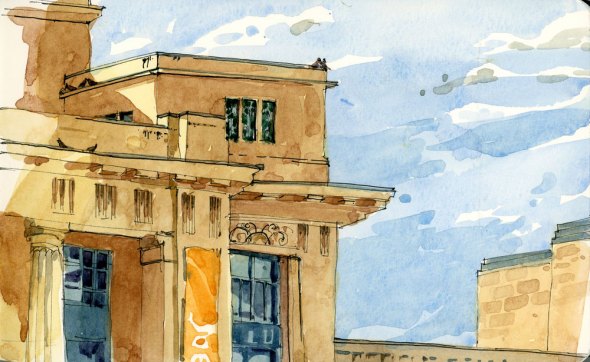
Gare Jean-Talon
Of course one of the reasons I enjoy Blaukopf’s work is that I love Montreal, but while I live in the more central Mile-End neighbourhood, she lives in the relatively suburban West Island. I enjoy the change in perspective, and the opportunity to see the suburbs-and-cottages side of Montreal life I rarely experience myself. Granted most of the samples of her work I’ve posted here are from the city, but all the more reason for you, dear reader, to explore her blog on your own. Blaukopf got a writeup earlier this year in the Montreal Gazette, Montreal’s only English-language daily newspaper:
“When you walk around, mostly you are just daydreaming, or involved with the thoughts in your own head,” she said. “But if you slow down and really look around, it can be quite meditative. You find things that are so amazing.”
Sketchblogging, she says, makes her ask herself: “What’s unique about this day?” The answer might be as simple as a basket full of chili peppers or evergreen branches heavy with snow.
– the Montreal Gazette, May 25 2012
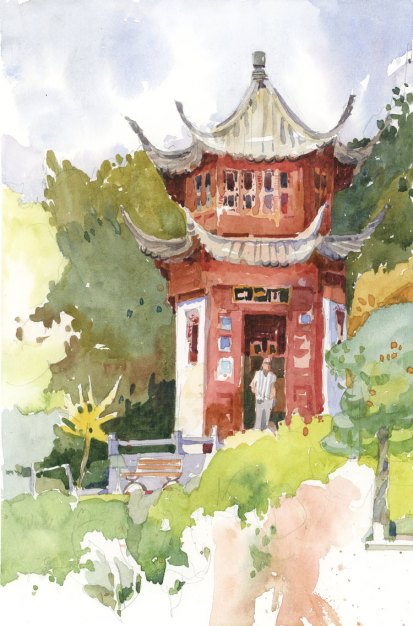
Jardin Botanique
So there you have it: Shari Blaukopf, sketchblogger. I encourage you to check out her work.
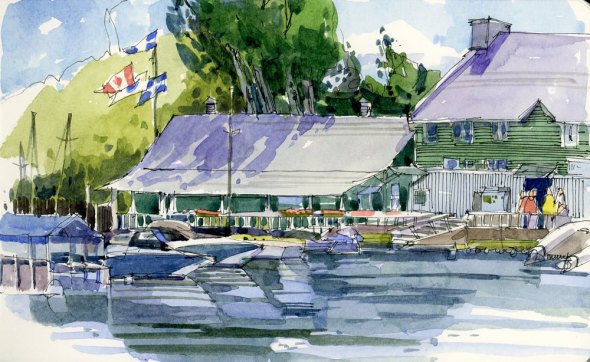
Pointe-Claire Yacht Club
Another collective noun – today, a Leap of Leopards. Leopards are the smallest of the big cats, but are the best climbers. A leopard can carry a kill many times its own weight up a nearly vertical tree in its jaws, where it will eat its fill without being bothered by scavengers or larger predators. They will often sleep in trees, and also hide their kittens up tall trees while out hunting. Why a “leap”? Perhaps because leopards often take a running leap at a tree to climb it, or that as they climb back down (always headfirst), they leap from the trees when close enough to the ground. It could also be that for all its strength, the leopard is a ambush hunter – it leaps on its unsuspecting prey and kills with a single crushing bite to the throat.
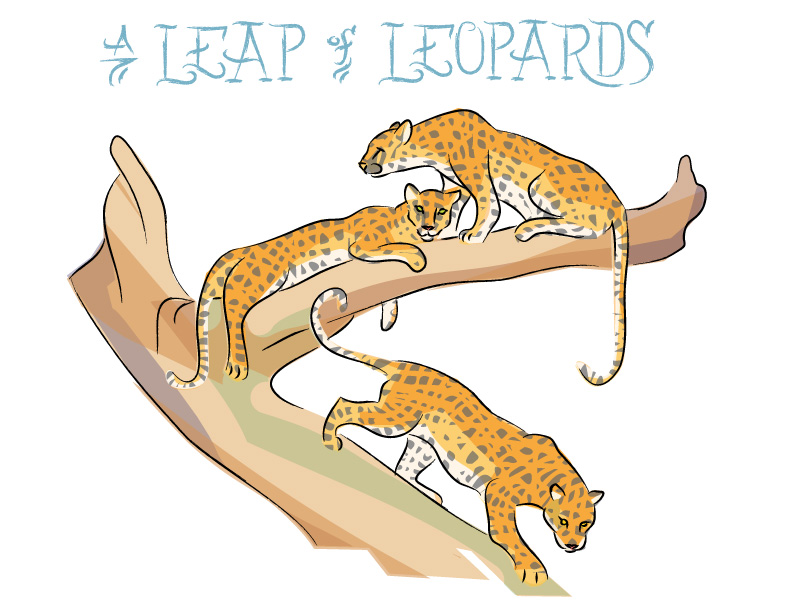
Michael Kenna is a photographer originally from the UK but living in the US since the 80s. He’s done a pile of work, but I found a series of rather haunting photos of what look like nuclear reactor silos (actually the coal-powered Ratcliffe Station in Nottinghamshire, England) that prompted me to make this post.
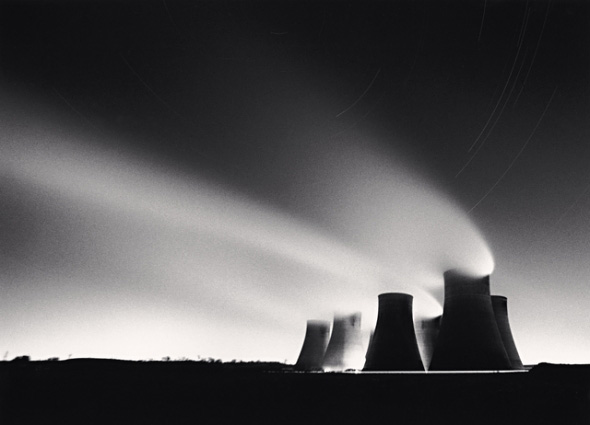
Ratcliffe Power Station Study 26
It took some time to figure out who had taken these photos as I found a couple on someone’s tumblr and of course they were unattributed. Bad form, internet; bad form. You, dear reader, shall not suffer as I have suffered. Behold: Power Stations.

Ratcliffe Power Station Study 40
(Kenna’s) work has been shown in galleries and museum exhibitions in Asia, Australia, Europe and the United States. He also has photographs included in the collections of the National Gallery of Art in Washington, D.C., the Patrimoine photographique in Paris, the Museum of Decorative Arts in Prague, and the Victoria and Albert Museum in London.
– wikipedia

Ratcliffe Power Station Study 45
There’s something reminiscent in these photos of the stylings of HR Giger (caveat – much of Giger’s work is erotic, some borderline pornographic). I’m sure the resemblance wasn’t intentional. Nonetheless, that whole biomechanical thing where built forms are presented in such a way as to remind of organic forms is pretty evident. Not creepy like Giger, but I think I may detect just the faintest whiff of erotica. Not that there’s anything wrong with that.
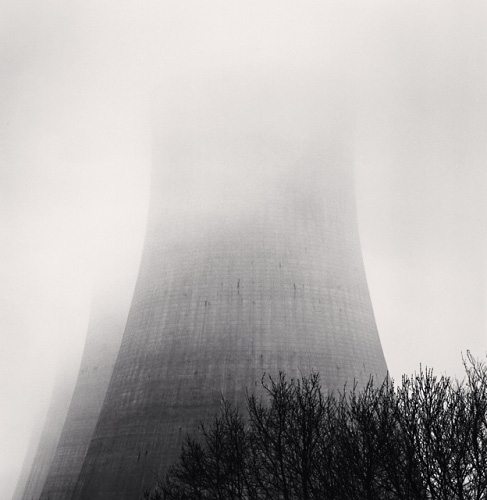
Ratcliffe Power Station Study 47
If you would like to peruse the entire set of power station photos, you can do so here. More of Michael Kenna’s extensive body of work can be seen on his website.


